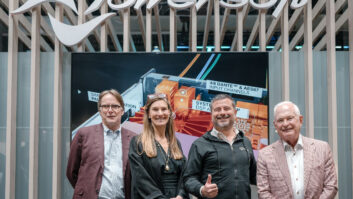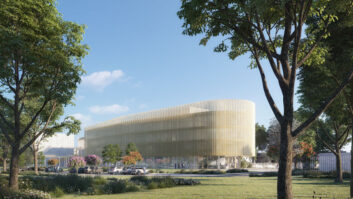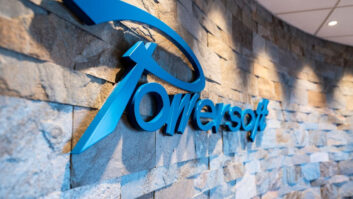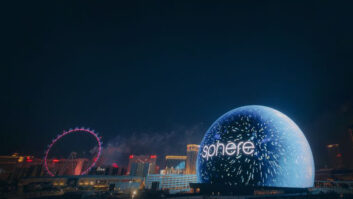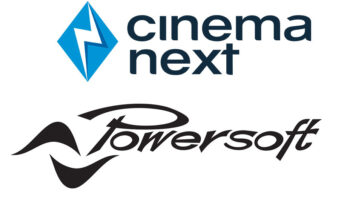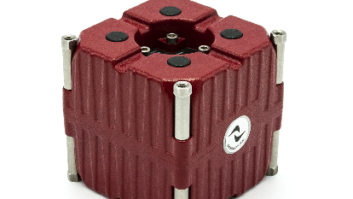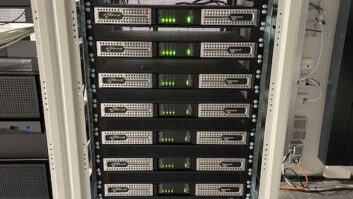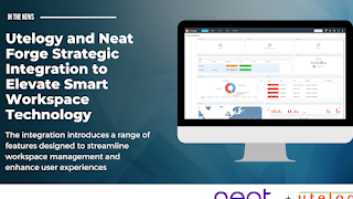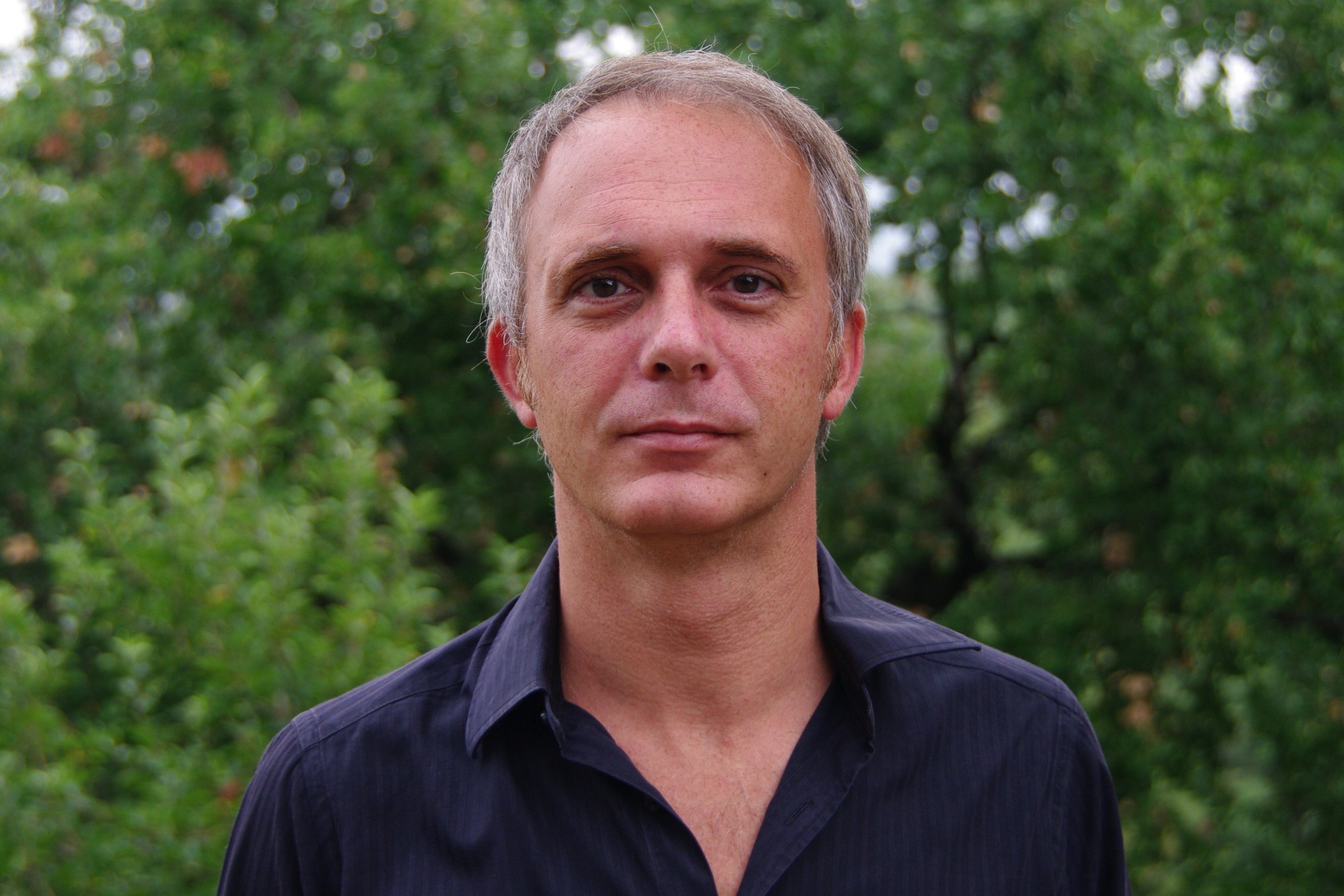
The co-founder and R&D tour-de-force behind the Italian power amplification and control pioneer talks about the company’s growing installation portfolio and the future of DIGAM in an integrated world. Phil Ward reports
Where did you learn your technical chops?
It was the University of Electronic Engineering in Florence; I actually did a PhD in Power Electronics. Those were my official studies, but I also play piano, drums and saxophone – a little – so I was always fascinated by good sound reproduction and hi-fi. Before we set up Powersoft, my brothers and I were involved in engineering for several third-party designers of linear amplifier power supplies, power converters and RF transmitters for hi-fi, as well as other industrial applications. We also did some acoustical design in the early years.
I’ve always considered power amplification, signal processing and transducer design in loudspeakers to be one single entity in the pursuit of performance. There’s no division between one domain and another. Otherwise it limits the evolution of the products to small changes that don’t add up.
Was this a founding principle of the company?
There was a natural bias towards power electronics, amplification efficiency and power conversion: these were the primary concerns, even if we didn’t have products dedicated to pro audio at the beginning. We did some hi-fi, but to be honest our technology was far ahead of existing market requirements back then. Nowadays there are switched mode amplifiers and Class D amplifiers in the hi-fi domain, but 20-plus years ago a digital amplifier was 10 times more powerful than necessary. Not even the professional market was ready, in fact.
There was a growing awareness of the benefits of more lightweight chassis, better efficiency and better power-performance ratios, but for us to concentrate solely on audio was a challenge because it was a really new technology that we were trying to establish on the market. You can imagine how difficult that could be!
Is that why you pursued pro audio over hi-fi, at least?
Yes, because it’s more about power efficiency, weight, wattage and portability – things that really make a lot of difference to the user. It doesn’t matter if a hi-fi amplifier is the same power but 10 times smaller – sometimes it can make it worse. Those users expect big, heavy boxes that reassure them!
Is the industry catching up with you now?
Powersoft is much more an engineering company than a marketing and branding-led company, so we’ve always had ideas that are way ahead of the industry as a whole. We’ve improved that imbalance in recent years by working more on the marketing side, making sure we are in sync with user requirements – creating a better exposure of what we do to the outside world. But we were born a technology-first company. Maybe, at the same time, more of the industry is looking for what we do nowadays…
You’ve been expanding into the installation markets. What was new at InfoComm this summer?
We presented the upgraded Ottocanali Series, specifically designed for installation, now featuring the full DSP engine from the flagship X Series for touring. We’ve ported all the processing structure and hardware across, and added audio distribution via Dante. It means very low power consumption, very high efficiency, double redundant power supply and an Ethernet backbone – the first time that we’ve put onto the market a series totally optimised for installation. It has all the matrix-based, multiple channel processing you’d expect from a very high-end solution, placed into an install-friendly package. Dante comes as standard.
We participated in Audinate’s presentations and provided products for demonstration at their events. It’s maturing well, but for practical reasons there may be other protocols that are suited to different purposes – the process of defining networking continues.
What else is in the portfolio that will attract system integrators?
The software has evolved into packages that can handle really large-scale installations, with control and monitoring of multiple connections and locations. We’ve added features that have been specifically designed for installation, as well as adjustable power consumption settings so that, in certain locations, you can really trim down to the minimum amount of power dissipation under ideal conditions. It makes for systems that are extremely favourable in terms of power consumption.
Are there any particular installation sectors that Powersoft appeals to?
The Ottocanali Series is intended for medium to large-scale installations, because in most smaller projects having eight channels in one package is too many. There are simply not enough zones to justify eight different signal feeds. The other great advantage for large installations is that the power consumption is so reduced, saving a lot of energy, cooling and space. One amplifier is a negligible draw on resources: if you need 200 that’s a different matter. If they carry half the weight, and take up half the space of a typical amp room – while requiring only one third of the power used by the alternatives to function – that makes a big difference.
We provide a very interesting software tool to calculate the consumption costs of our products, and the increased return on your investment that you get from the energy savings we achieve. It’s a real eye-opener: the results are staggering. Some of our very large installations demonstrate extraordinary savings, which we are happy to provide detailed proof of to any potential customers. One of our key verticals is the theme park market, where we have some great examples of what can be done with this in mind.
What trends do you see in system integration?
It’s a growing market, that’s for sure. Generally speaking, it’s growing faster than the live sector. Although today, within the definition of ‘installation’ you have to include live sound systems that are permanently installed inside a venue or at some other location: it’s really a ‘two in one’ solution. The growth is seen in government investment in cultural infrastructure, but also in private sector concert venues that wish to establish a fixed sound system. There’s a big change in the appreciation of what goes into a fixed system, but it also depends on which region of the world you’re looking at. It’s very different here in Europe to the East, the West and the South, so it’s hard to say there is one common trend.
Some territories are more focused on the demands of installation than on live sound. For example, the renewal of a sound system in the cause of energy restraints is much more of an installation issue – a live sound system doesn’t matter so much. You can live without absolute state-of-the-art efficiency. For installation, the regulations are getting strict on power consumption and noise thresholds, especially for brand new venues.
This is especially noticeable in Europe, and to a slightly lesser extent in the US. On the whole, though, all long-term projects are learning how to examine carefully the issues of long-term power consumption, so the biggest investments have to take this into account.
Is there more collaboration today, more OEMs, more development partners…?
To some extent. There is increasing knowledge of the benefits of integration and, from my point of view, that’s one of the best things happening in the industry. We may not always be the most cost-effective answer, but we’re working on products that, one day, will bring a new price-performance threshold to the market. It takes time for new ideas to become successful, and you don’t always get the benefits of your own ideas! Collaboration is one way to keep some of the benefits, by planting the seeds of improvement that will grow across the industry and one day make things better for everyone.
We don’t force anyone to put a ‘Powered by Powersoft’ logo on their products; if our technology is contained within, it’s there to see for anyone who wants to look. If another customer wants to use that slogan, that’s fine. We’re not hiding! But, as I said, we’re an organisation that is led by engineering, not marketing.
Do you have an abiding design philosophy?
Everything is connected. Physics, acoustics, even perception: perception makes a huge difference to the overall performance of the product. You can’t skip any dimension to get the best results. Even the temperature affects the reaction to the performance, and therefore the product. Audiences need to be physically comfortable to embrace the experience.
How far can you, the designer, control that?
Today you can control maybe 30% of the ‘boundary’ conditions of the system. Not so much… which is why I think there is still a lot to be done from this point of view. You can make some details very accurate, even ‘picky’, but sometimes at the expense of other things that, globally, are influencing the experience of the audience. There are still lots of parameters that aren’t in the game yet. Of course, you always concentrate on what you do best – but that’s not the key to the best results as a whole.
